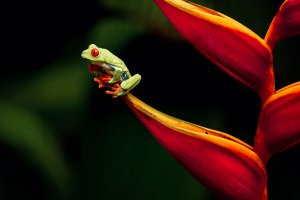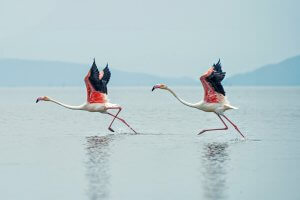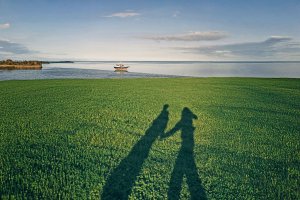Would you like to improve your technique for nature photography? Check out these tips
If you like nature photography, organising long walks in the countryside or the mountains and finding the perfect place at the right time to capture all the splendour of nature or the wildest animals, in today’s article we are going to give you a series of tips and recommendations so that your outings to the natural environment are much more fruitful and, in time, you manage to become a benchmark among landscape and animal photographers.
We have already told you that in order to take quality nature photography it is important that you love the environment, respect animals and take care of the planet. This is the only way to capture the essence of every landscape and every living thing that crosses your lens.
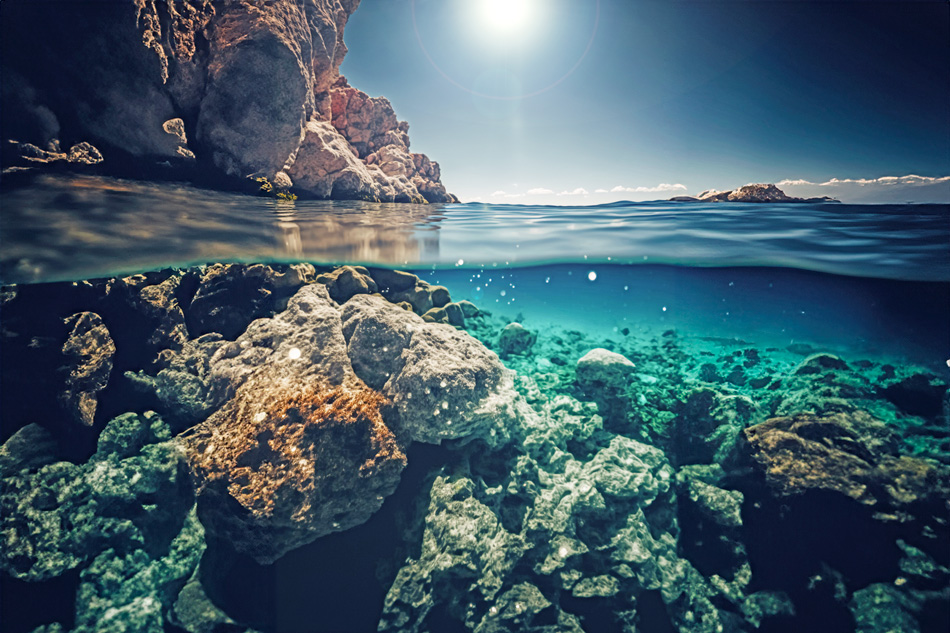
To shoot nature photography and capture the power of the landscape around you, you have to listen, feel and shoot your camera.
Contenido
- What kind of options do you have when it comes to specialising in nature photography?
- Would you like to take the best nature photographs?
- Extra tips for high-impact nature reporting
- If you want to do nature photography: listen, look and shoot your camera
- Mal di testa per la vostra attività di fotografia? Prendete un’Arcadina
What kind of options do you have when it comes to specialising in nature photography?
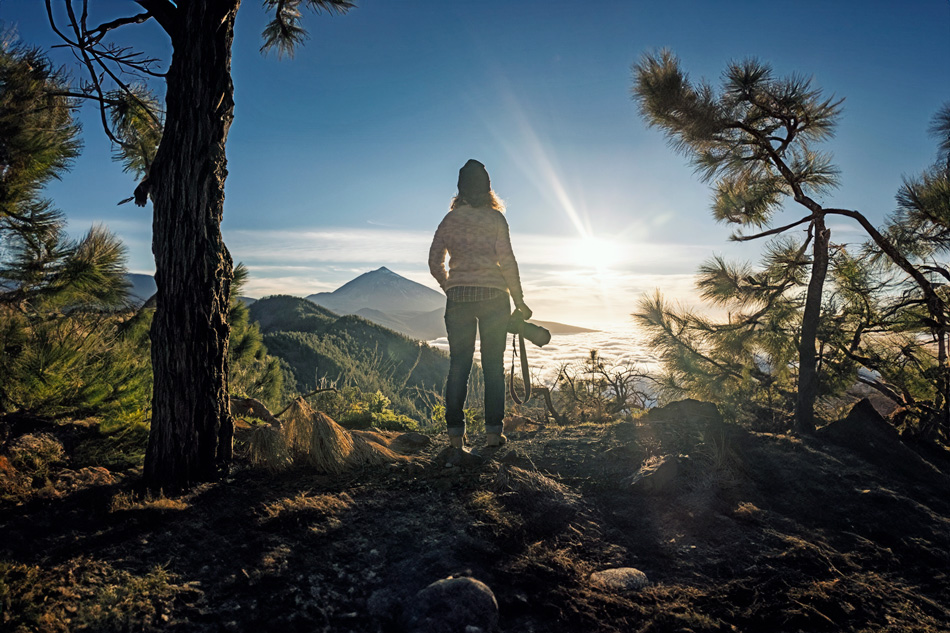
As the name suggests, nature photography is all about capturing the (natural) landscape around you, wildlife, flora or all kinds of inanimate elements, such as the foothills of a mountain in the autumn season, in their pure state.
Nowadays, nature photographers are becoming even more specialised, so that a number of more specific disciplines are emerging within this type of photography. These are some of them:
- Landscape photography.
- Reports on the native fauna of a place.
- Images of birds both static and in flight.
- Photographs of flora.
- Night reports.
- Astronomical photography.
- Underwater images.
- Macro photography of nature and some insects.
- Still life reportage.
- Aerial photographs of a natural environment.
- Etc.
We are sure that there are many more types of nature photography and as time goes by even more specific ones will emerge, because our planet is full of surprises and amazing phenomena that have not yet been photographed. Because our planet is full of surprises and amazing phenomena that have not yet been photographed. Would you like us to take a closer look at all these specialities?
Landscape photography
When it comes to nature photography, landscape photography is perhaps the most popular and well-known branch, along with wildlife photography. In this type of photo shoot you have to take into account the time of year you want to photograph, the time of day you want to immortalise a landscape and the weather forecast for the day of the shoot. All this information is essential to take into account in order to achieve truly amazing results and to master the light in each shot.
In this type of photographic reportage, the strategic point from which you take the photos can also be decisive, so it is important that you first make a field trip to investigate different locations around the area you want to photograph and see which point is the most appropriate for taking good photos of the landscape you have in front of you.
Images of the wildest wildlife
Wildlife photography usually portrays animals in the wild when they are in their natural habitat. In order to take this type of photographs, it is necessary to have a wide knowledge of the natural cycles of each species and their daily habits. But it is also important to know very well the environment in which they are going to move in order to be able to easily locate the herd, the burrows or nests and places where they may be to hunt or drink water.
In this type of reportage, you can try to capture the animals in movement, at rest or with their offspring. In contrast to landscape photography, in this specialised type of photography you will not be able to prepare the scenes as much, as the animals can be unpredictable and, of course, you will not be able to intervene in them.
Bird reports
Bird photography could be included in the discipline of fauna, but such is the popularity of this type of images and the large number of birdwatching enthusiasts that it deserves its own section. In this type of reportage it is essential to know and know how to differentiate perfectly the different species of birds, their migratory habits and the wetlands they usually pass through at each time of the year.
In addition, this type of nature photography can be one of the disciplines in which you have to be patient and serene to find the right moment and the desired species. It is also important to note that to get good bird images it is important that you know how to camouflage yourself with the environment and be very stealthy when making any kind of movement, otherwise your models will run away before you have prepared your camera.
Photographs of flora
In flora photography, the aim is to capture the smallest and most detailed vegetation, e.g. all kinds of flowers, plants and shrubs.
In this type of session it is very important to take into account the time of the year when, for example, some plants bloom and to master where the floral species you want to portray grow. You also have to play with the lenses, the lighting and, of course, the composition and the angle from which you aim.
Night-time nature photography
In night photography, landscape and astronomical photography merge to create a unique and surprising scene, together with the help of other phenomena, for example: the phases of the moon, a thunderstorm, star shower, etc.
To make this type of images it is important to know the environment in which you are going to make the photo shoot, visit it in broad daylight to avoid unpleasant surprises on the day of the photo shoot and always look for a high, clear and free of artificial light place to capture the infinite beauty of the night sky.
In short, night photography is knowing how to wait for the right moment and play with light and shadow to capture true works of art in the natural environment.
Astronomical Photography
Astronomical or space photography is closely linked to the love of the stars. In this type of photographic reportage, the aim is to capture the celestial vault in all its splendour or to capture in an image an astronomical phenomenon that is going to occur at a specific moment, such as the passage of a constellation, comet, meteorite, the phases of the moon, an eclipse, a shower of stars or even the silhouette of a planet.
To take this type of photographs correctly, it is important to find a place away from the city lights and with a wide view of the sky. It goes without saying that, on a cloudy night, these photographs will be impossible to take. It is also important that you have some knowledge of astronomy to be able to locate the most important celestial bodies and that you learn to master long exposure photography so that the results are really amazing.
Underwater reports
Undoubtedly, the discipline that requires the most infrastructure, technical equipment and budget is underwater photography, where the aim is to capture in this particular medium the flora, fauna, underwater relief and why not? Some treasure sunk hundreds of years ago.
It goes without saying that when photographing nature under the sea it is essential to have appropriate underwater equipment and to master the technique of scuba diving. And if you are looking to capture images at great depths, lighting equipment specifically for this type of reportage is a must for you.
As with other types of nature photography, it is important that days before the photo shoot you familiarise yourself with the environment in which you will be diving. Another point to highlight is your own safety, before trying this type of reportage it is important that you attend a diving course so that the experience of photographing the bottom of the sea is really satisfactory.
Macro images
Macro photography can cover all kinds of microorganisms, insects, flowers and small animals. This type of photography, besides being very eye-catching and striking, can be used to improve certain studies in biology.
These types of images, as well as being part of nature photography, can also be classified as artistic and somewhat more abstract photography.
To make this kind of photo sessions it is essential that you have a good macro lens, that you are very patient and observant and that you use a tripod to make this kind of detailed images.
Still life photography
Still life photography seeks to capture inanimate elements in different scenes within the different seasons of the year and its purpose is usually more artistic. The author usually seeks to convey a message through a composition of the inanimate elements that he encounters along the way.
This type of reportage is one of the most creative and spontaneous at the same time, since the photographer will never know what elements he is going to find in the field. You can also add a more artistic touch to the photographs during the editing process.
Aerial images
Thanks to aerial photography, we have been able to appreciate the beauty of the landscape around us from a much wider and more extraordinary point of view.
Aerial photography began for military and topographic purposes and was mostly carried out with shots taken from aeroplanes that were later processed to obtain a better knowledge of the geography of a place (photogrammetry).
Nowadays, with a drone, it is also possible to take amazing photos of hidden places for aesthetic and decorative purposes.
In order to carry out a landscape photo shoot with a drone it is important that you have a licence to fly drones and that you are sure that there are no restrictions in the airspace where you want to fly it.
Would you like to take the best nature photographs?
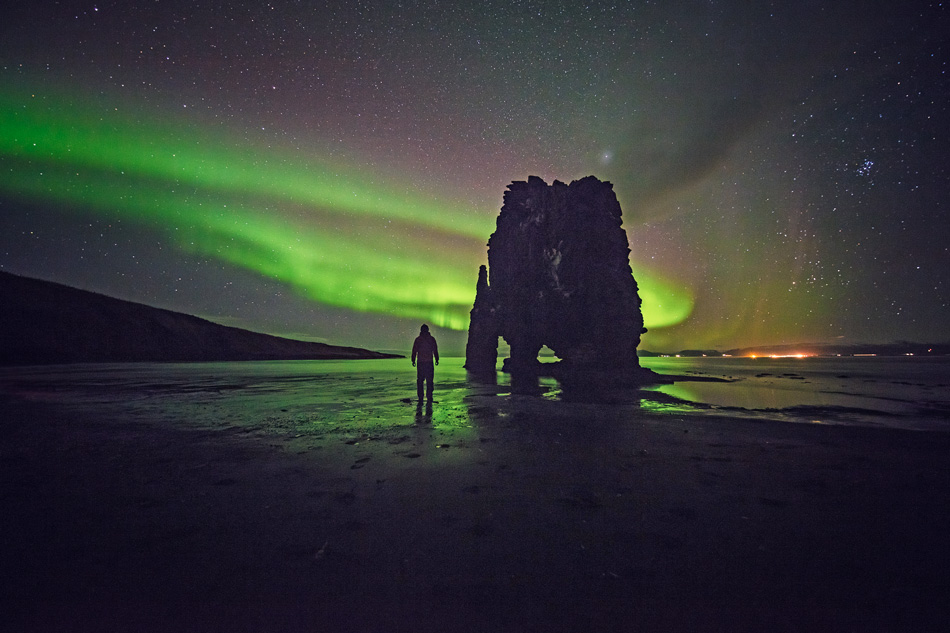
To photograph nature in a more or less professional way, it is important that you have good outdoor equipment and a number of accessories to make your trip to the countryside really fruitful.
Here are some of the must-haves for your next nature photography trip to the countryside:
- Cameras.
- Special cameras, e.g. for underwater or aquatic photography.
- Lighting.
- Flash.
- Lenses: wide angle, telephoto and zoom.
- Tripod with ball head and shutter release.
- Timer.
- Filters to further control neutral density light, polarisers and gradients.
- Monopod.
- Dron.
- Parasol.
- Diffusers and reflectors.
- Memory cards and extra batteries.
- Bubble leveller.
- GPS.
- Concealment or hide and camouflage clothing.
- Cleaning kit for camera and lenses.
- Binoculars.
- Lightweight, high-capacity backpack for all your equipment.
- Hiking clothing and footwear.
- Torch, rain jacket, rain cover for camera, utility knife, water, food.
- Etc.
Ideally, before loading your backpack with unnecessary equipment that could delay your journey to the point where you plan to photograph nature, you should plan your trip to the countryside very well and study what kind of photographs you want to take. In this way, you will be able to carry in your backpack only the necessary equipment to start photographing nature like a pro.
It is also important that you take into account the weather forecast and do not go out into the countryside if you are going to have bad weather conditions.
Extra tips for high-impact nature reporting
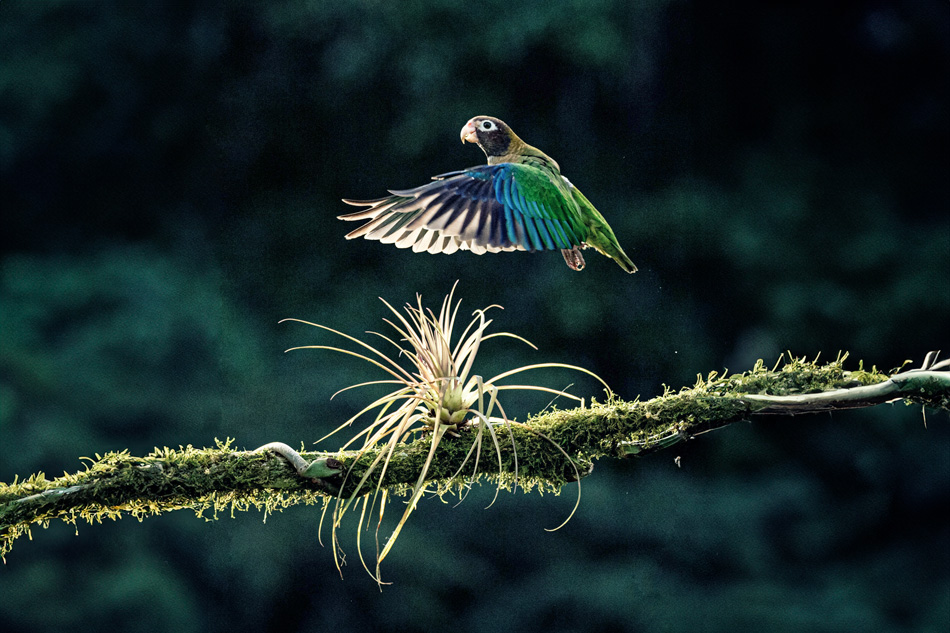
Although the first photographers who began to photograph nature had other intentions, such as transporting the observer of the image to places in the wild where the hand of man did not appear or to carry out a more scientific control of the fauna and flora. Today this discipline has become a social trend.
The world is becoming more and more aware (or so we hope) of the dire consequences of climate change and such lively photographs help to further reinforce social awareness of environmental care, sustainability and energy saving.
With this paradigm shift, the way of taking pictures of nature has also changed, and above all, the intention of the author.
Here we are going to give you some tips that have nothing to do with the sustainability of the planet but will help you to photograph nature at a much more professional level:
- Set the aperture appropriately depending on the type of nature photography you are going to take.
- Control the ISO level to make the image perfect.
- Take into account the timetable and the weather before going to the venue.
- Study well the species of animals you want to photograph.
- He plays with perspectives, especially in landscape photography.
- Prepare your camera and backpack in advance so that you don’t have any unpleasant surprises in the middle of nature.
- And be patient, very patient. This is the only way you will be able to photograph the natural environment around you like a great professional.
And remember to take care and keep clean every corner of the planet where you go to photograph with your camera. These small gestures will make the landscape you capture at that moment last much longer intact.
Recommendations for photographing flora and plants
When starting out in this type of photography you can start with smaller specimens such as flowers, plants and shrubs that you can easily find in the area where you live and gradually move further away from the city to photograph completely natural landscapes.
When going out into the countryside it is important that you are well prepared both physically and in terms of clothing. It is also important that you know the area where you are going to move well to avoid getting lost or injuring yourself. As you can see, going out into the countryside for nature photography is much more complicated than doing studio sessions.
Tips for capturing animals with your camera
If you are just starting to photograph animals, you can start by going to a zoo where the animals are in a small space and are usually calmer to do your first tests.
Maybe the idea of photographing caged animals doesn’t appeal to you, so do some research on this topic and you will find several places where they have reinvented the idea of the more traditional zoo and where you can see animals in semi-freedom, such as the Parque de la Naturaleza de Cabárceno (Cantabria), Doñana (Huelva), Cabañeros (Ciudad Real), Molló Parc (Girona), etc.
If you want to do nature photography: listen, look and shoot your camera
So now you know, if you want to do nature photography and start making your trips to the countryside profitable, you can try several disciplines and see in which media you find your true inspiration.
Always prepare your field trips with care and detail, respect the environment around you and create a photography business that allows you to make a profit from every picture you take.
At Arcadina we give you all the tools to make your trips to the countryside much more than just a nice hobby and we also give you the option to try our services free of charge for 14 days.
On this occasion we would like to share with you an interview with Joan Vendrell, nature photographer, trainer, long-time friend and new ambassador of Arcadina.
>> Meet Joan Vendrell, the new ambassador of Arcadina
And to say goodbye, we would like to do a survey among landscape, flora and fauna photographers. Which disciplines do you most identify with when it comes to photographing nature? We’ll read you in the comments.
Mal di testa per la vostra attività di fotografia? Prendete un’Arcadina
Mal di testa per la vostra attività di fotografia? Prendete un’Arcadina
Realizzate il vostro sogno di diventare fotografi professionisti con l’aiuto delle nostre soluzioni aziendali. Ora è possibile creare un sito web e un’attività commerciale gratuitamente per 14 giorni senza alcun impegno di permanenza.
Grazie alle soluzioni aziendali di Arcadina per i fotografi, i vostri problemi di lavoro spariranno.
In caso di domande, il nostro Servizio Clienti è sempre pronto ad aiutarvi 24 ore al giorno, 7 giorni alla settimana. Vi ascoltiamo.


